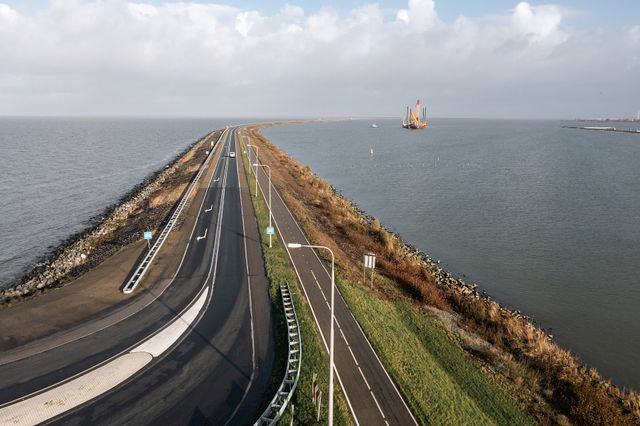In Flevoland, you will find Land Art at several locations. This is a form of ecological or enviromental art, where the art form speaks to your imagination. Also: the entire environment is part of the artwork itself.
Flevoland's famous landscape artworks can be found in surprising places. In the middle of, and surrounded by, Flevoland's landscape. At Land Art, the landscape plays a major role in the various art objects. See how the work of art is absorbed into the space and vice versa. Development is in the genes of the Flevoland people, which is why there are still new works of art. Flevoland has space and ‘the sky is the limit’.
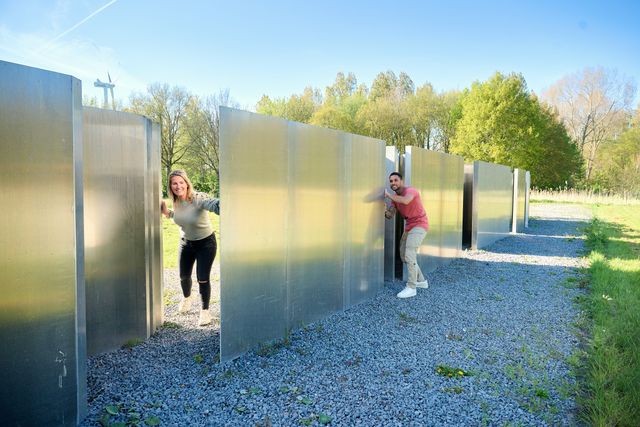
Artworks by world-renowned artists are hidden in Flevoland's passing landscape. ‘Landscape art in unlimited outdoor space’. From hidden gems to inescapable art. World-famous artists such as Daniel Libeskind, Robert Morris and Richard Serra have unleashed their creativity on Flevoland's natural beauty.
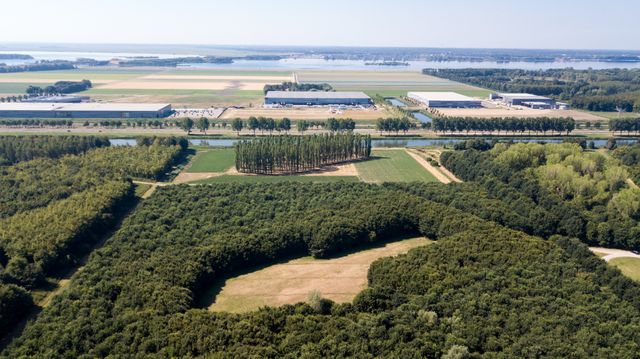
The landscape artworks in Flevoland are unique in the world, as nowhere else in the world will you find so many landscape artworks together as in Flevoland. Go out by car (or by bike) yourself, or join an organised trip. Discover the art form that captures your imagination. Weather or no weather, the artworks can always be visited. Each season adds its own charm to the artworks. Not to get enough! Discover below the beautiful Land Art that Flevoland has to offer.
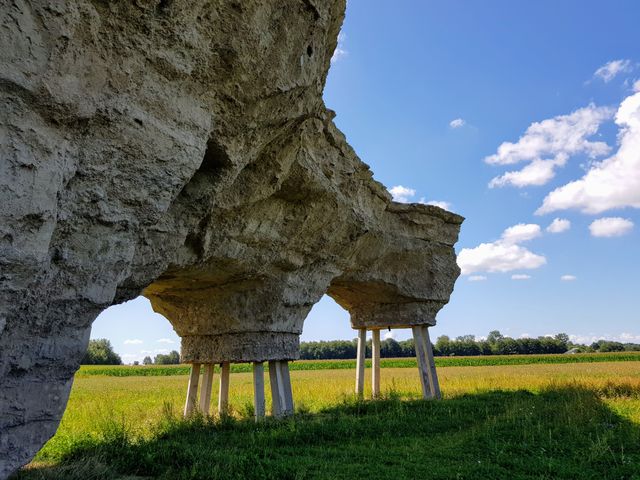
There used to be a six-km long breakwater at this spot. A small part of this has been restored by Paul de Kort and made the central axis of his artwork. Around this, long crakes float like wind wheels. In strong winds and currents, they all point in the same direction. The poles are arranged in a hexagonal grid. This grid is based on the spatial layout of the Northeast Polder.
More information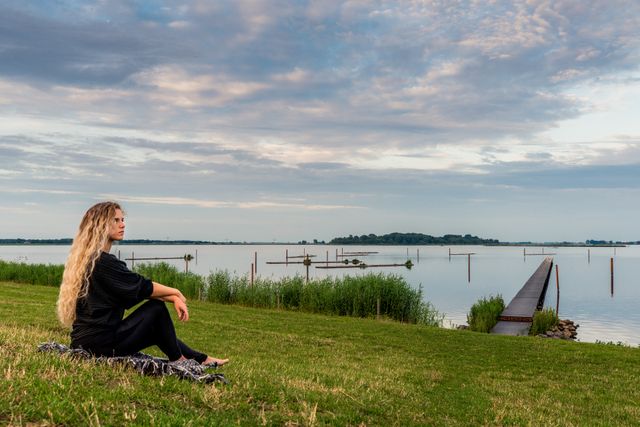
On a breakwater on the coast of Lelystad stands a sculpture almost 26 metres high: Exposure. It consists of 1,800 bars of metal. The artwork was designed by British artist Antony Gormley. The crouching man looks out over the Markermeer. And thus overlooks the vast landscape.
More information
Aardzee by Piet Slegers is one of the largest works of art in the Netherlands. It covers five hectares, as big as the surrounding agricultural plots. Between the sloping embankments, which roll through the landscape like surging waves, are paths covered in blue-grey shells, a reference to air and water. Like a solidified movement of the seabed, it lies between the flat fields. The water level of the pond is the only horizontal surface between the slopes.
More information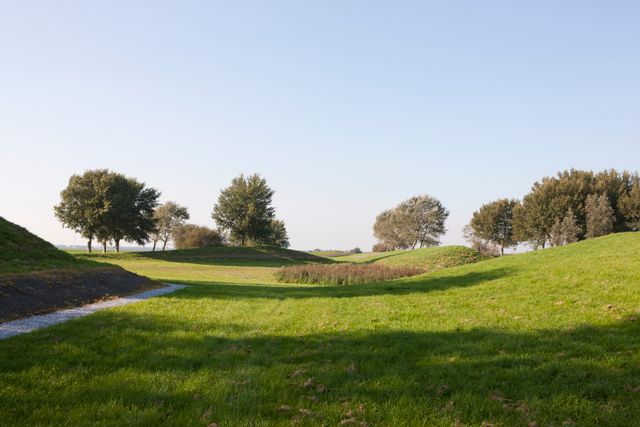
This ‘Gothic’ cathedral has no stone vaults, stained-glass windows or choir aisles, but is formed by a group of poplars. Artist Marinus Boezem planted these poplars according to the floor plan of Notre-Dame de Reims. Between the trees are concrete paths reflecting the ribs of the cross vaults. The shell circles around the trees refer to the sea that was still here for much of the 20th century.
More information
At the artwork Polderland Garden of Love and Fire, five intersecting lines lie in the landscape like a strange script. These lines connect people in different places and times. The three canals symbolise the imaginary connection of three cities: Salamanca, the city where Juan de la Cruz studied; Berlin, where Libeskind was living and working at the time; and Almere, the site of the artwork.
More information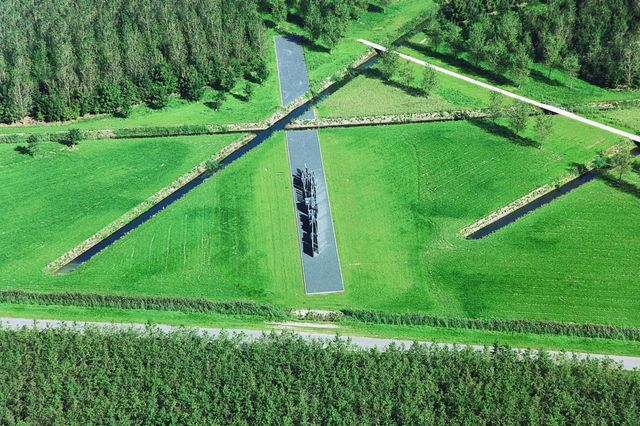
Sea Level's two concrete walls are two hundred metres long and stand diagonally in line with each other on either side of a canal. At the ends, the walls barely noticeably flow into the landscape, while in the middle, at the deepest point of the park, they are several metres high. Sea Level gives physical meaning to the concept of sea level: without the dykes, the water level would be up to the upper edge of the walls.
More information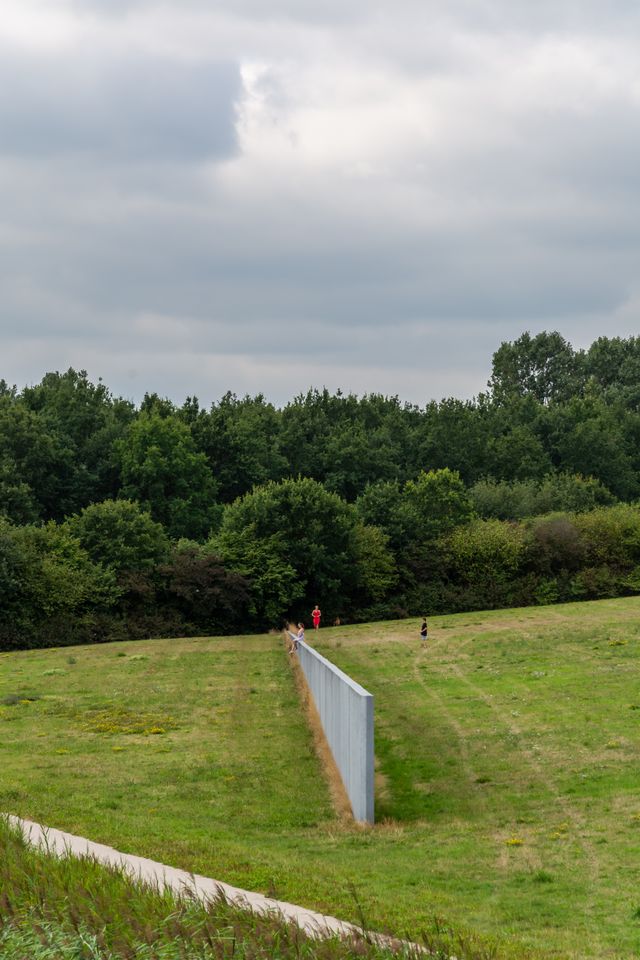
This artwork refers to (prehistoric) places where the sun and planets used to be observed. Observatory consists of two circles. In these are three v-shaped cut-outs, through which you can see the polder landscape. Through the middle steel visor you can see the sunrise at the beginning of spring and autumn, when day and night are of equal length. The stone wedges show the sunrise on 21 June and 21 December.
More information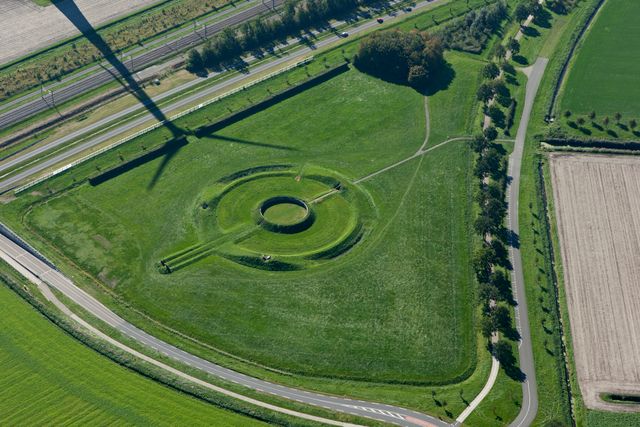
Riff's design, PD#18245 commemorates 100 years of the Zuiderzee Act and reclamation. Gramsma used an excavated space in the Zuiderzee soil as a temporary mould for his artwork. The result forms a new vantage point over the reclaimed landscape and, like an excavated archaeological find, recalls both past and present: the reclamation of the land and the continuous change of the man-made landscape.
More information
The Deltawerk// is a beautiful and colossal work of art in the Waterloopbos in Marknesse. It was created by the artists RAAAF | Atelier de Lyon. They turned the Delta flume -a giant basin in which tests were conducted to see how the Delta Works would react to certain natural forces- into a more than 200-metre-long work of art.
More information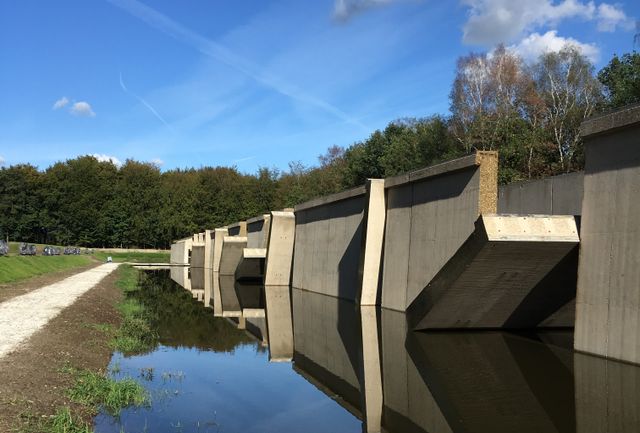
On the Houtribdijk between Lelystad and Enkhuizen, angels sing. You used to be able to tune in to a special FM transmitter there, these days you can hear them singing via an app. As Flevoland's only land art, Angels/Angels is not a large physical object, but a sound. But thus, like the others, it is connected to a large location, because you can only listen to the artwork when driving on the 26-kilometre-long Houtribdijk.
More information